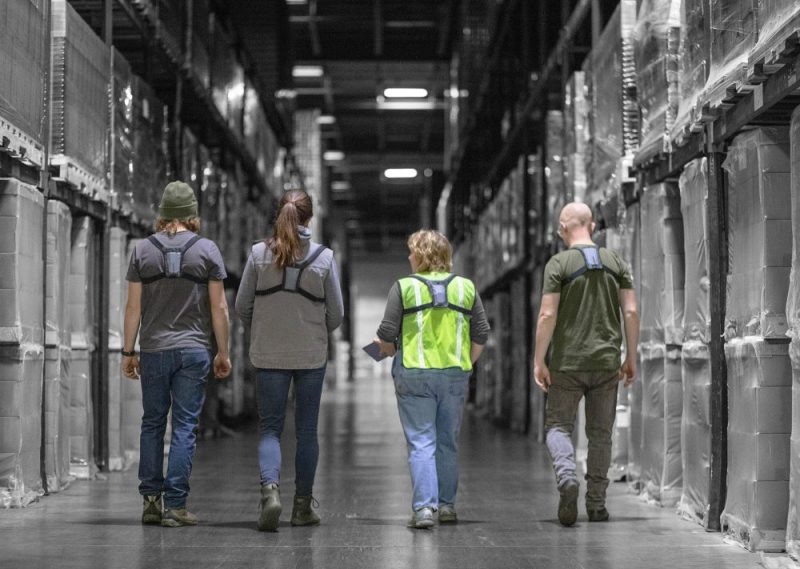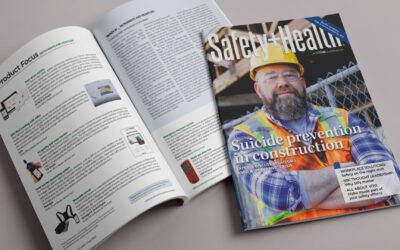Maximizing the Benefits of Strongarm SafeWork Sensors
Introduction: Bridging the Gap Between Innovation and Adoption
In today’s fast-paced industrial environments, ensuring the safety and well-being of workers is a top priority. With the rise of wearable safety technology, companies have access to tools that can drastically reduce workplace injuries and improve overall productivity. One such innovation is the Strongarm SafeWork Sensor. This cutting-edge device monitors and enhances worker safety in real-time.
However, despite the apparent benefits, many companies need help getting workers to embrace and utilize these sensors fully. Safety managers, distribution center managers, and company leadership are often committed to the success of the Strongarm program. Still, they encounter resistance from employees who either don’t see the value or are reluctant to invest the extra time required to use the sensors.
This blog post addresses this challenge by exploring effective strategies to encourage worker adoption of wearable safety technology and highlighting these sensors’ significant benefits. By the end of this post, you’ll have a deeper understanding of how to foster a culture of safety and innovation, ensuring that your team not only accepts but also champions the use of this vital technology.
Understanding the Resistance: Why Workers May Be Hesitant About Wearable Safety Technology
Before diving into strategies to encourage sensor adoption, it’s essential to understand the root causes of resistance. Workers’ hesitation to use Strongarm SafeWork Sensors often stems from a few key concerns:
- Perceived Inconvenience
Many workers may view the sensors as another task to add to their busy day. Putting on the device, checking it out, and following any suggestions for movement modifications can seem like a burden. - Privacy Concerns
Some employees may be wary of being constantly monitored. Tracking their movements and actions might feel intrusive, leading to discomfort and resistance. - Lack of Immediate Benefits
Workers may need help to see how the sensors directly benefit them. They might question why they should bother if the device’s advantages aren’t immediately apparent. - Fear of Repercussions
In some cases, employees may worry that the data collected by the sensors could be used against them, whether in performance evaluations or disciplinary actions.
Understanding these concerns is the first step toward addressing them. You can build trust and encourage adoption by acknowledging these issues and providing clear, empathetic responses.

Communicating the Value of SafeWork Sensors
Clear and consistent communication is one of the most effective ways to encourage the adoption of wearable safety technology. Workers need to understand the value that Strongarm SafeWork Sensors bring to the company and their safety and well-being.
Highlight Personal Benefits
When introducing the sensors, emphasize how they can directly benefit each worker. For example, you could explain how the sensors can help prevent common injuries like back strains or repetitive motion injuries by providing real-time feedback on their movements. Workers can appreciate this immediate benefit, as it directly impacts their safety.
Share Success Stories
Another powerful tool is sharing success stories from companies or departments successfully implementing the sensors. Highlight cases where workers avoided serious injuries thanks to the real-time alerts provided by the sensors. Seeing tangible results can help shift perceptions and show workers that the sensors are more than just another task—they’re a critical safety tool.
Address Privacy Concerns Head-On
Privacy is a significant concern for many workers, so it’s crucial to address this issue openly. Reassure employees that the data collected by the sensors is used solely for their safety and well-being, not for monitoring performance or issuing penalties. Be transparent about how the sensor data will be used—and who will have access to it—to alleviate these concerns and build trust.
Integrating Wearable Safety Technology into the Daily Routine
For workers to embrace the Strongarm SafeWork Sensors, they need to see them as an integral part of their daily routine rather than an additional chore. Here are some strategies to achieve this.
Simplify the Process
Make the process of using the sensors as simple and seamless as possible. Provide clear, step-by-step instructions on using the devices and quickly address technical issues. Consider setting up a quick daily checklist or incorporating the sensor setup into existing routines, like morning briefings or equipment checks.
Lead by Example
Leadership plays a crucial role in driving adoption. When managers and supervisors consistently use the sensors and advocate for their benefits, it sets a powerful example for workers. If leadership demonstrates a commitment to safety and the use of these tools, employees are more likely to follow suit.
Provide Continuous Support
Ongoing support and training are essential to ensuring that workers feel comfortable using the sensors. Regular refresher courses, Q&A sessions, and one-on-one support can help address any lingering concerns or technical challenges. By offering continuous support, you can help workers integrate the sensors into their daily routines and ensure consistent usage.
Creating a Safety-First Culture
Encouraging the adoption of wearable safety technology goes beyond providing the tools—it requires fostering a culture that prioritizes safety and innovation. Here’s how to cultivate such a culture.
Promote Safety as a Core Value
Safety should be more than just a requirement—it should be a core value ingrained in every aspect of the workplace. Regularly communicate the importance of safety and how sensors play a crucial role in protecting workers. Celebrate safety milestones and recognize employees who exemplify safe work practices.
Involve Workers in the Process
Engage workers in implementing the sensors. Solicit their feedback on the devices and their use and make adjustments based on their input. Workers who feel heard and that their opinions matter are more likely to buy into the program.
Reward Positive Behavior
Incentivize the consistent use of the sensors by offering rewards or recognition for workers who regularly use them and adhere to safety guidelines. Rewards could be safety bonuses, public recognition, or even small tokens of appreciation. Positive reinforcement can go a long way in encouraging adoption.

Demonstrating Long-Term Benefits
While communicating immediate benefits is essential, it’s also important to highlight the long-term advantages of using the Strongarm SafeWork Sensors. Workers need to see that these devices are not just a short-term solution but a long-term investment in their health and safety.
Reducing Injury Rates
Emphasize the role that sensors play in reducing overall injury rates. By collecting and analyzing data, these devices can help identify patterns and potential hazards before they lead to injuries. Over time, this proactive approach can lead to a safer work environment and fewer incidents, which benefits everyone.
Improving Job Satisfaction
When workers feel safe and valued, their job satisfaction increases. The sensors show that the company is investing in their well-being, which can lead to higher morale and a more positive workplace culture. Higher job satisfaction often correlates with improved productivity and lower turnover rates, creating a win-win situation for workers and management.
Enhancing Career Longevity
Long-term use of the sensors can contribute to the longevity of workers’ careers. By preventing injuries and promoting healthy movement patterns, the sensors help workers maintain their physical health, allowing them to stay in their roles longer and reducing the likelihood of early retirement due to injury.
Conclusion: Building a Safer, Healthier Future with Strongarm SafeWork Sensors
Encouraging workers to adopt Strongarm SafeWork Sensors requires more than just distributing the devices and expecting immediate results. It involves clear communication, simplifying the integration process, fostering a safety-first culture, and demonstrating the long-term benefits of using these innovative tools.
Safety managers, distribution center managers, and company leadership are crucial in driving this change. By understanding workers’ concerns, addressing them with empathy, and providing ongoing support, you can create an environment where safety is prioritized and innovation is embraced.
The journey to full adoption may take time, but the rewards—reduced injury rates, improved job satisfaction, and a healthier workforce—are well worth the effort. With commitment and perseverance, you can ensure that Strongarm SafeWork Sensors become an integral part of your workplace, protecting your most valuable asset: your people.




